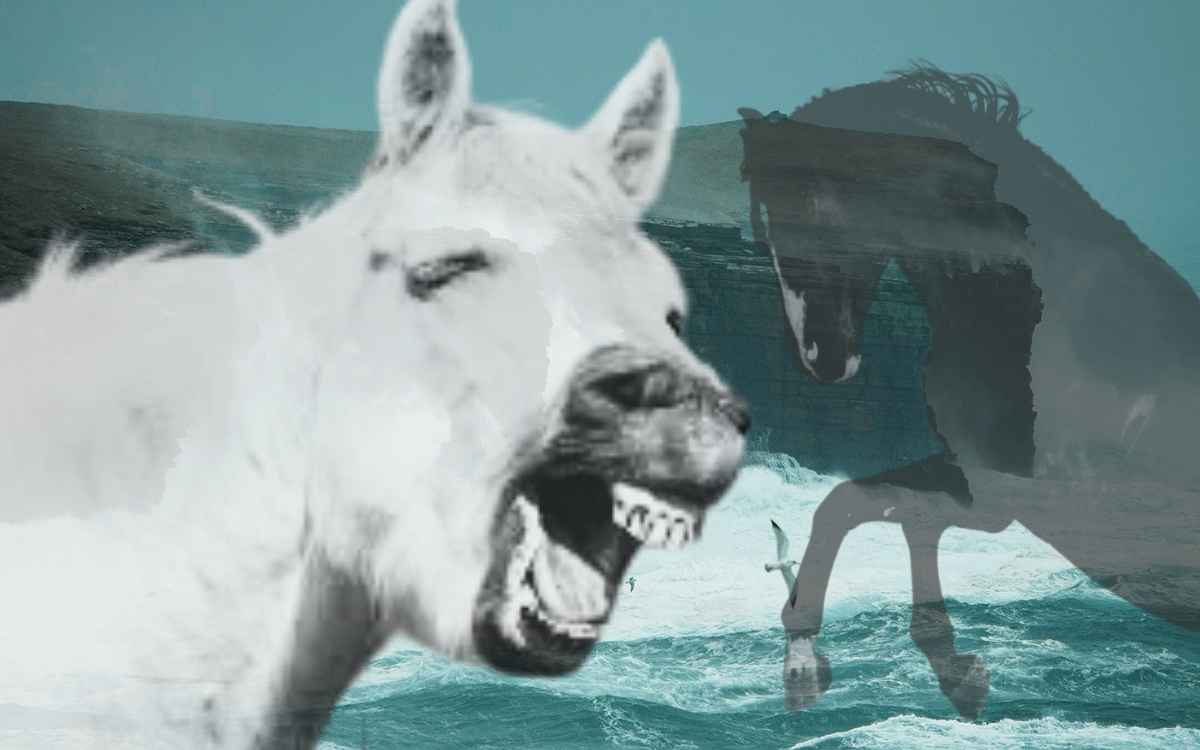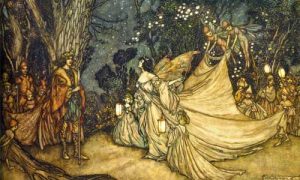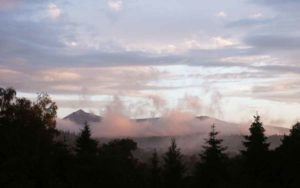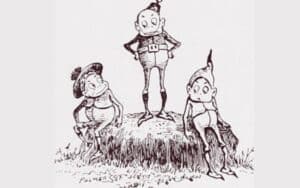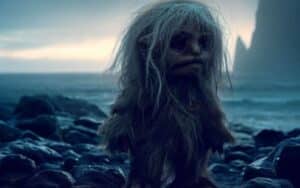The Nuckelavee has been described as the nastiest of all Scottish demons. Guest writer MONA HERB BOUGHTON introduces us to this devil beast from Orkney…
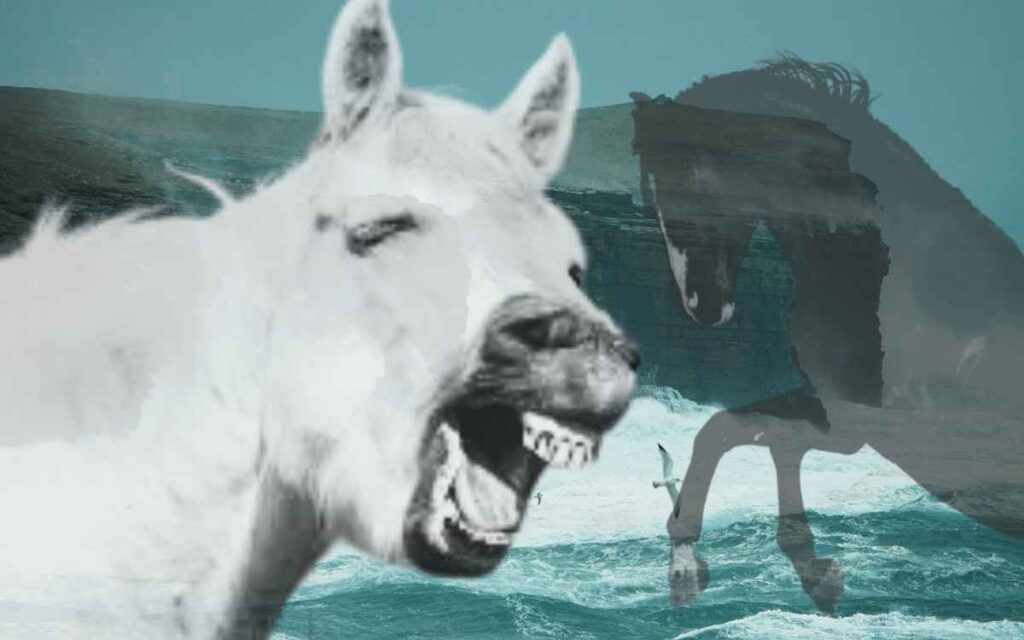
Most beaches smell the same. As the sea beats against the land, an ancient odour of brine overpowers the senses – even hiding whatever rot the waves have dredged up that day.
However, the Orkney isles houses a beast whose breath, cloying and feverish, not smelling of the dead but reeking of the dying, drowns out even the ocean.
On the first day of winter, the nuckelavee strides out of the sea’s cold embrace and makes for land with the determination of an automaton. Despite nearly being the same shape, nobody could mistake the nuckelavee for a horse. The abominable thing is gigantic, towering over barns, and to call it flayed would be an understatement – it never had skin to begin with. Gelatinous black blood can be seen struggling in its fatty yellow veins, which in turn painfully pulse throughout the old, purpling muscles of the beast.
It has no ears, nor are there eyes where you’d expect them on a horse. Instead, the nuckelavee has a single quivering eye set into the centre of its head. Bulbous and an almost translucent orange, it looks more like the roe of salmon.
Like a limp aspen spurting out of a boulder, a grotesque rider is melded to the nuckelavee’s back. Equally skinless and vaguely shaped like a man, the rider possesses none of its steed’s drive. It languishes, leaning backwards underneath the weight of its grotesquely swollen head. Meanwhile its sinewy arms, so long that they trail behind in the surf like a jellyfish’s tendrils, are slack. If there was anyone nearby though, the rider’s head would snap forward with a deceptive speed, and its whale-like mouth would unfurl to reveal piggish tusks. Then its arms, ending in crippled twisted talons, would shoot forward with the ferocity of a rabid dog.
Orcadian Origins
In the Orkney isles, the nuckelavee grew into a bringer of pestilence who devastated crops and spread disease amongst livestock. It didn’t do this out of any twisted sense of mirth or need for vengeance, but simply because that was its duty. The one exception to this was that it hated the smell of burning seaweed for soda ash so much that it plagued the island where the practice begun (Stronsay) with mortasheen, a disease which affected horses.
Thankfully for Orcadian residents, they were granted a brief respite from the nuckelavee every year. During summers, the Mither of the Sea, a benevolent spirit of Orkney Isles, would imprison the nuckelavee in the depths of the ocean. In her eternal battle with an Orcadian winter spirit known as Terran though, she would become too exhausted to keep reins on the nuckelavee during winters, only having the strength to capture it again the next summer.
The Nuckelavee’s History
While it’s believed that myths about the nuckelavee began in the 16th century, the first known transcription of it was written by W. Traill Dennison and published in 1891 by the Edinburgh University Press. The transcription included a supposed encounter an old farmer, Tammas, had with the nuckelavee. In it, Tammas explains that the only reason he survived was because he remembered that the monster feared fresh water, and ran into a nearby loch.
In a weird kind of logic, this weakness does make sense. Much like saltwater fish cannot survive in freshwater, the nuckelavee was first and foremost a sea monster. W. Traill Dennison even claimed that nuckelavee was Orcadian for “Devil of the Sea” – although this is dubious at best as nuckelavee is actually Dennison’s corruption of the monster’s original name, knoggelvi. In turn, the name knoggelvi is thought to be derived from the words nykur and nuggle, two Scandinavian water horses affiliated with creaking ice.
Since many sources claim the nuckelavee is a composition of kelpies (Scotland’s own water horses) and an unspecified creature from Nordic mythology, it’s plausible that this unspecified Nordic monster are the nykur and nuggle.
Watch Nuckelavee video
Both a writer and an avid fan of weird horror and inventive fantasy, MONA HERB BOUGHTON has spent the past five years honing her craft in prose, reviews, and articles alike. No matter what she writes though, her work will usually contain bizarre creatures, the undead, or very strange people – in fact, she’s currently working on a story about vampires and birds being as unglamorous as possible. Not satisfied with just a first-level degree Bachelor of Arts, she is now currently studying a Master’s degree in creative writing. You can follow her on Twitter @WifiWitchWrites

